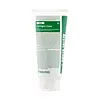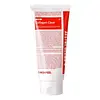What's inside
What's inside
 Key Ingredients
Key Ingredients

 Benefits
Benefits

 Concerns
Concerns

 Ingredients Side-by-side
Ingredients Side-by-side

Water
Skin ConditioningMyristic Acid
CleansingGlycerin
HumectantStearic Acid
CleansingPotassium Hydroxide
BufferingPropylene Glycol
HumectantLauric Acid
CleansingGlycol Distearate
EmollientGlyceryl Stearate Se
EmulsifyingCoco-Glucoside
CleansingButylene Glycol
HumectantCetearyl Alcohol
EmollientCentella Asiatica Extract
CleansingCollagen
MoisturisingSoluble Collagen
HumectantCollagen Amino Acids
MoisturisingHydrolyzed Collagen
EmollientCollagen Extract
Skin ConditioningOriganum Vulgare Leaf Extract
Skin ConditioningChamaecyparis Obtusa Leaf Extract
Skin ConditioningSalix Alba Bark Extract
AstringentLactobacillus/Soybean Ferment Extract
Skin ConditioningPortulaca Oleracea Extract
Skin ConditioningCinnamomum Cassia Bark Extract
MaskingScutellaria Baicalensis Root Extract
AstringentPanicum Miliaceum Seed Extract
Skin ConditioningLavandula Angustifolia Oil
MaskingCitrus Aurantium Bergamia Fruit Oil
MaskingPelargonium Graveolens Flower Oil
MaskingSalvia Sclarea Oil
MaskingCitrus Limon Peel Oil
MaskingJuniperus Virginiana Oil
MaskingPanthenol
Skin ConditioningSodium Hyaluronate
HumectantBiosaccharide Gum-4
Skin ConditioningAsiatic Acid
Skin ConditioningAsiaticoside
AntioxidantMadecassic Acid
Skin ConditioningMadecassoside
AntioxidantGlycine
BufferingSerine
MaskingGlutamic Acid
HumectantAspartic Acid
MaskingLeucine
Skin ConditioningAlanine
MaskingLysine
Skin ConditioningArginine
MaskingTyrosine
MaskingPhenylalanine
MaskingValine
MaskingThreonine
Proline
Skin ConditioningIsoleucine
Skin ConditioningHistidine
HumectantMethionine
Skin ConditioningCysteine
AntioxidantTannic Acid
AstringentCitric Acid
BufferingCaprylic/Capric Triglyceride
MaskingHydrogenated Phosphatidylcholine
EmulsifyingSucrose Stearate
EmollientDisodium EDTA
Lactose
HumectantCellulose
AbsorbentAscorbyl Palmitate
AntioxidantTocopheryl Acetate
AntioxidantHydroxypropyl Methylcellulose
Emulsion StabilisingJojoba Esters
Emollient1,2-Hexanediol
Skin ConditioningPotassium Sorbate
PreservativeCI 77289
Cosmetic ColorantLinalool
PerfumingLimonene
PerfumingCitronellol
PerfumingGeraniol
PerfumingWater, Myristic Acid, Glycerin, Stearic Acid, Potassium Hydroxide, Propylene Glycol, Lauric Acid, Glycol Distearate, Glyceryl Stearate Se, Coco-Glucoside, Butylene Glycol, Cetearyl Alcohol, Centella Asiatica Extract, Collagen, Soluble Collagen, Collagen Amino Acids, Hydrolyzed Collagen, Collagen Extract, Origanum Vulgare Leaf Extract, Chamaecyparis Obtusa Leaf Extract, Salix Alba Bark Extract, Lactobacillus/Soybean Ferment Extract, Portulaca Oleracea Extract, Cinnamomum Cassia Bark Extract, Scutellaria Baicalensis Root Extract, Panicum Miliaceum Seed Extract, Lavandula Angustifolia Oil, Citrus Aurantium Bergamia Fruit Oil, Pelargonium Graveolens Flower Oil, Salvia Sclarea Oil, Citrus Limon Peel Oil, Juniperus Virginiana Oil, Panthenol, Sodium Hyaluronate, Biosaccharide Gum-4, Asiatic Acid, Asiaticoside, Madecassic Acid, Madecassoside, Glycine, Serine, Glutamic Acid, Aspartic Acid, Leucine, Alanine, Lysine, Arginine, Tyrosine, Phenylalanine, Valine, Threonine, Proline, Isoleucine, Histidine, Methionine, Cysteine, Tannic Acid, Citric Acid, Caprylic/Capric Triglyceride, Hydrogenated Phosphatidylcholine, Sucrose Stearate, Disodium EDTA, Lactose, Cellulose, Ascorbyl Palmitate, Tocopheryl Acetate, Hydroxypropyl Methylcellulose, Jojoba Esters, 1,2-Hexanediol, Potassium Sorbate, CI 77289, Linalool, Limonene, Citronellol, Geraniol
Water
Skin ConditioningDipropylene Glycol
HumectantGlycerin
HumectantButylene Glycol
Humectant1,2-Hexanediol
Skin ConditioningIsopropyl Isostearate
EmollientNiacinamide
SmoothingSodium Hyaluronate
HumectantHydroxypropyltrimonium Hyaluronate
Caprylic/Capric Triglyceride
MaskingHydrolyzed Hyaluronic Acid
HumectantSodium Acetylated Hyaluronate
HumectantHyaluronic Acid
HumectantAcetyl Hexapeptide-8
HumectantSodium Hyaluronate Crosspolymer
HumectantHydrolyzed Sodium Hyaluronate
Skin ConditioningAstaxanthin
Skin ConditioningPotassium Hyaluronate
Skin ConditioningLavandula Angustifolia Flower Extract
CleansingSalvia Sclarea Extract
AntiseborrhoeicHyacinthus Orientalis Extract
Skin ConditioningChamomilla Recutita Flower Extract
MaskingBorago Officinalis Extract
EmollientCentaurea Cyanus Flower Extract
AstringentCarbomer
Emulsion StabilisingArginine
MaskingBeeswax
Emulsion StabilisingButyrospermum Parkii Butter
Skin ConditioningStearyl Alcohol
EmollientHydrogenated Polyisobutene
EmollientDimethicone
EmollientSorbitan Stearate
EmulsifyingPanthenol
Skin ConditioningPolysorbate 60
EmulsifyingPEG-40 Hydrogenated Castor Oil
EmulsifyingPalmitic Acid
EmollientC14-22 Alcohols
Emulsion StabilisingAmmonium Acryloyldimethyltaurate/Vp Copolymer
Hydrogenated Lecithin
EmulsifyingAdenosine
Skin ConditioningPolyacrylate-13
C12-20 Alkyl Glucoside
EmulsifyingTocopheryl Acetate
AntioxidantDisodium EDTA
Polyisobutene
Propanediol
SolventPolyglyceryl-10 Diisostearate
EmulsifyingEthylhexylglycerin
Skin ConditioningPolysorbate 20
EmulsifyingSorbitan Isostearate
EmulsifyingGlucose
HumectantCI 42090
Cosmetic ColorantParfum
MaskingHexyl Cinnamal
PerfumingAlpha-Isomethyl Ionone
PerfumingHydroxycitronellal
PerfumingCitronellol
PerfumingLimonene
PerfumingGeraniol
PerfumingLinalool
PerfumingWater, Dipropylene Glycol, Glycerin, Butylene Glycol, 1,2-Hexanediol, Isopropyl Isostearate, Niacinamide, Sodium Hyaluronate, Hydroxypropyltrimonium Hyaluronate, Caprylic/Capric Triglyceride, Hydrolyzed Hyaluronic Acid, Sodium Acetylated Hyaluronate, Hyaluronic Acid, Acetyl Hexapeptide-8, Sodium Hyaluronate Crosspolymer, Hydrolyzed Sodium Hyaluronate, Astaxanthin, Potassium Hyaluronate, Lavandula Angustifolia Flower Extract, Salvia Sclarea Extract, Hyacinthus Orientalis Extract, Chamomilla Recutita Flower Extract, Borago Officinalis Extract, Centaurea Cyanus Flower Extract, Carbomer, Arginine, Beeswax, Butyrospermum Parkii Butter, Stearyl Alcohol, Hydrogenated Polyisobutene, Dimethicone, Sorbitan Stearate, Panthenol, Polysorbate 60, PEG-40 Hydrogenated Castor Oil, Palmitic Acid, C14-22 Alcohols, Ammonium Acryloyldimethyltaurate/Vp Copolymer, Hydrogenated Lecithin, Adenosine, Polyacrylate-13, C12-20 Alkyl Glucoside, Tocopheryl Acetate, Disodium EDTA, Polyisobutene, Propanediol, Polyglyceryl-10 Diisostearate, Ethylhexylglycerin, Polysorbate 20, Sorbitan Isostearate, Glucose, CI 42090, Parfum, Hexyl Cinnamal, Alpha-Isomethyl Ionone, Hydroxycitronellal, Citronellol, Limonene, Geraniol, Linalool
 Reviews
Reviews

Ingredients Explained
These ingredients are found in both products.
Ingredients higher up in an ingredient list are typically present in a larger amount.
1,2-Hexanediol is a synthetic liquid and another multi-functional powerhouse.
It is a:
- Humectant, drawing moisture into the skin
- Emollient, helping to soften skin
- Solvent, dispersing and stabilizing formulas
- Preservative booster, enhancing the antimicrobial activity of other preservatives
Arginine is an amino acid that is important for human development. Your body uses is it to produce hair keratin and skin collagen.
As a cosmetic ingredient, Arginine has antioxidant properties and can also help repair damaged skin. This ingredient is derived either synthetically or from animals.
Arginine isn't fungal acne safe when used in the presence of other lipids (fats, fatty acids, oils, esters, etc). Oils and fats occur naturally within the skin, so take caution when using Arginine if you're prone to fungal acne.
Learn more about ArginineButylene Glycol (or BG) is used within cosmetic products for a few different reasons:
Overall, Butylene Glycol is a safe and well-rounded ingredient that works well with other ingredients.
Though this ingredient works well with most skin types, some people with sensitive skin may experience a reaction such as allergic rashes, closed comedones, or itchiness.
Learn more about Butylene GlycolThis ingredient is an emollient, solvent, and texture enhancer. It is considered a skin-softener by helping the skin prevent moisture loss.
It helps thicken a product's formula and makes it easier to spread by dissolving clumping compounds.
Caprylic Triglyceride is made by combining glycerin with coconut oil, forming a clear liquid.
While there is an assumption Caprylic Triglyceride can clog pores due to it being derived from coconut oil, there is no research supporting this.
Learn more about Caprylic/Capric TriglycerideCitronellol is used to add fragrance/parfum to a product. It is often derived from plants such as roses. In fact, it can be found in many essential oils including geranium, lavender, neroli, and more. The scent of Citronellol is often described as "fresh, grassy, and citrus-like".
Since the Citronellol molecule is already unstable, Citronellol becomes irritating on the skin when exposed to air.
Citronellol is a modified terpene. Terpenes are unsaturated hydrocarbons found in plants. They make up the primary part of essential oils.
Citronellol is not able to be absorbed into deeper layers of the skin. It has low permeability,
Citronellol is also a natural insect repellent.
Learn more about CitronellolDisodium EDTA plays a role in making products more stable by aiding other preservatives.
It is a chelating agent, meaning it neutralizes metal ions that may be found in a product.
Disodium EDTA is a salt of edetic acid and is found to be safe in cosmetic ingredients.
Learn more about Disodium EDTAGeraniol is used to add fragrance/parfum to a product. It is the main component of citronellol. It is a monoterpenoid and an alcohol.
Monoterpenes are naturally found in many parts of different plants.
Geraniol can be found in many essential oils including Rose Oil and Citronella Oil. The scent of Geraniol is often described as "rose-like". Many foods also contain Geraniol for fruit flavoring.
Geraniol can irritate the skin when exposed to air. However, irritation depends on the ability of geraniol to penetrate into the skin. In general, geraniol is not able to penetrate skin easily.
Geraniol is colorless and has low water-solubility. However, it is soluble in common organic solvents.
Like citronellol, it is a natural insect repellent.
2,6-Octadien-1-ol, 3,7-dimethyl-, (2E)-
Learn more about GeraniolGlycerin is already naturally found in your skin. It helps moisturize and protect your skin.
A study from 2016 found glycerin to be more effective as a humectant than AHAs and hyaluronic acid.
As a humectant, it helps the skin stay hydrated by pulling moisture to your skin. The low molecular weight of glycerin allows it to pull moisture into the deeper layers of your skin.
Hydrated skin improves your skin barrier; Your skin barrier helps protect against irritants and bacteria.
Glycerin has also been found to have antimicrobial and antiviral properties. Due to these properties, glycerin is often used in wound and burn treatments.
In cosmetics, glycerin is usually derived from plants such as soybean or palm. However, it can also be sourced from animals, such as tallow or animal fat.
This ingredient is organic, colorless, odorless, and non-toxic.
Glycerin is the name for this ingredient in American English. British English uses Glycerol/Glycerine.
Learn more about GlycerinLimonene is a fragrance that adds scent and taste to a formulation.
It's found in the peel oil of citrus fruits and other plants such as lavender and eucalyptus. The scent of limonene is generally described as "sweet citrus".
Limonene acts as an antioxidant, meaning it helps neutralize free radicals.
When exposed to air, oxidized limonene may sensitize the skin. Because of this, limonene is often avoided by people with sensitive skin.
The term 'fragrance' is not regulated in many countries. In many cases, it is up to the brand to define this term. For instance, many brands choose to label themselves as "fragrance-free" because they are not using synthetic fragrances. However, their products may still contain ingredients such as essential oils that are considered a fragrance.
Learn more about LimoneneLinalool is a fragrance and helps add scent to products. It's derived from common plants such as cinnamon, mint, citrus, and lavender.
Like Limonene, this ingredient oxidizes when exposed to air. Oxidized linalool can cause allergies and skin sensitivity.
This ingredient has a scent that is floral, spicy tropical, and citrus-like.
Learn more about LinaloolPanthenol is a common ingredient that helps hydrate and soothe the skin. It is found naturally in our skin and hair.
There are two forms of panthenol: D and L.
D-panthenol is also known as dexpanthenol. Most cosmetics use dexpanthenol or a mixture of D and L-panthenol.
Panthenol is famous due to its ability to go deeper into the skin's layers. Using this ingredient has numerous pros (and no cons):
Like hyaluronic acid, panthenol is a humectant. Humectants are able to bind and hold large amounts of water to keep skin hydrated.
This ingredient works well for wound healing. It works by increasing tissue in the wound and helps close open wounds.
Once oxidized, panthenol converts to pantothenic acid. Panthothenic acid is found in all living cells.
This ingredient is also referred to as pro-vitamin B5.
Learn more about PanthenolSodium Hyaluronate is hyaluronic acid's salt form. It is commonly derived from the sodium salt of hyaluronic acid.
Like hyaluronic acid, it is great at holding water and acts as a humectant. This makes it a great skin hydrating ingredient.
Sodium Hyaluronate is naturally occurring in our bodies and is mostly found in eye fluid and joints.
These are some other common types of Hyaluronic Acid:
Learn more about Sodium HyaluronateTocopheryl Acetate is AKA Vitamin E. It is an antioxidant and protects your skin from free radicals. Free radicals damage the skin by breaking down collagen.
One study found using Tocopheryl Acetate with Vitamin C decreased the number of sunburned cells.
Tocopheryl Acetate is commonly found in both skincare and dietary supplements.
Learn more about Tocopheryl AcetateWater. It's the most common cosmetic ingredient of all. You'll usually see it at the top of ingredient lists, meaning that it makes up the largest part of the product.
So why is it so popular? Water most often acts as a solvent - this means that it helps dissolve other ingredients into the formulation.
You'll also recognize water as that liquid we all need to stay alive. If you see this, drink a glass of water. Stay hydrated!
Learn more about Water